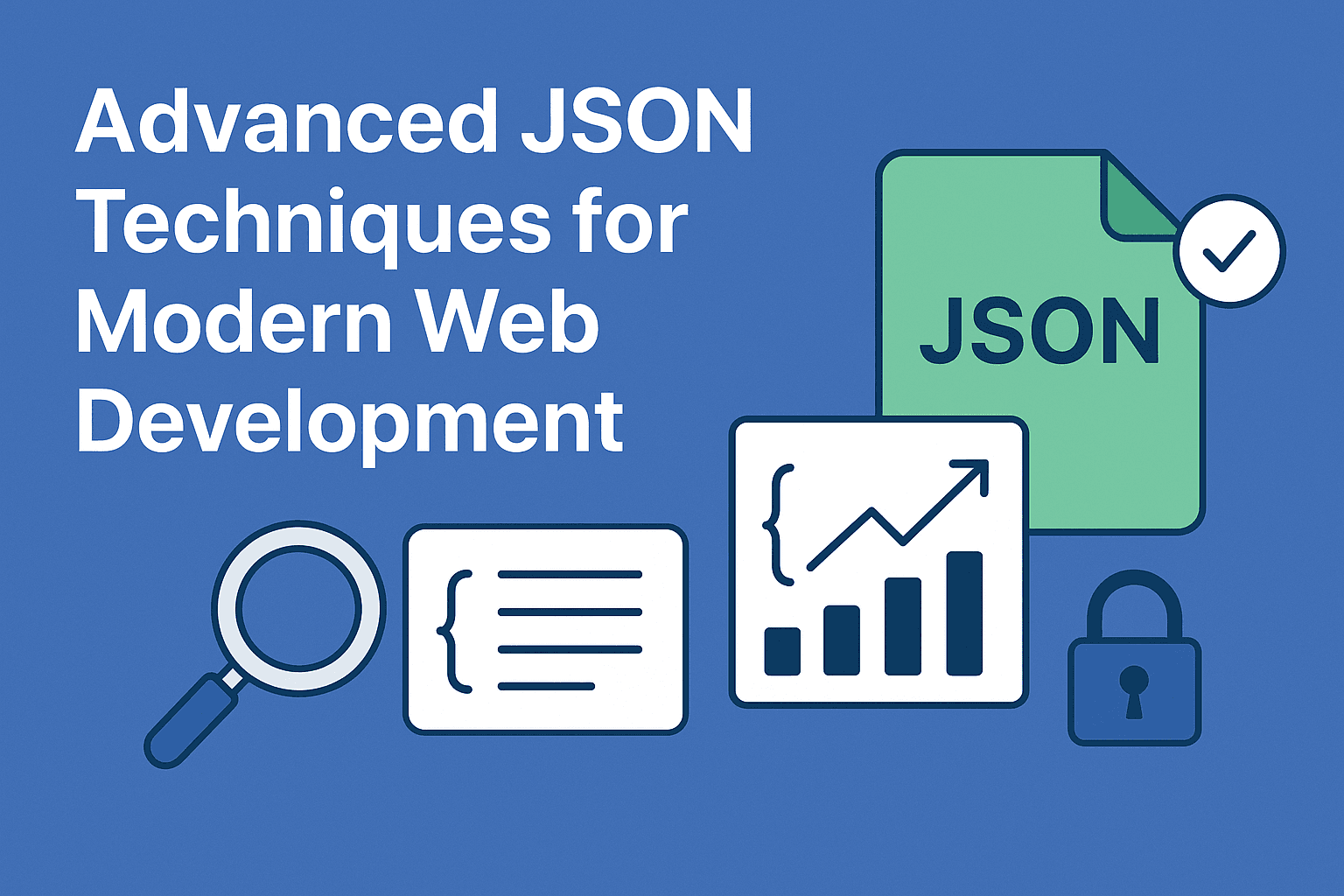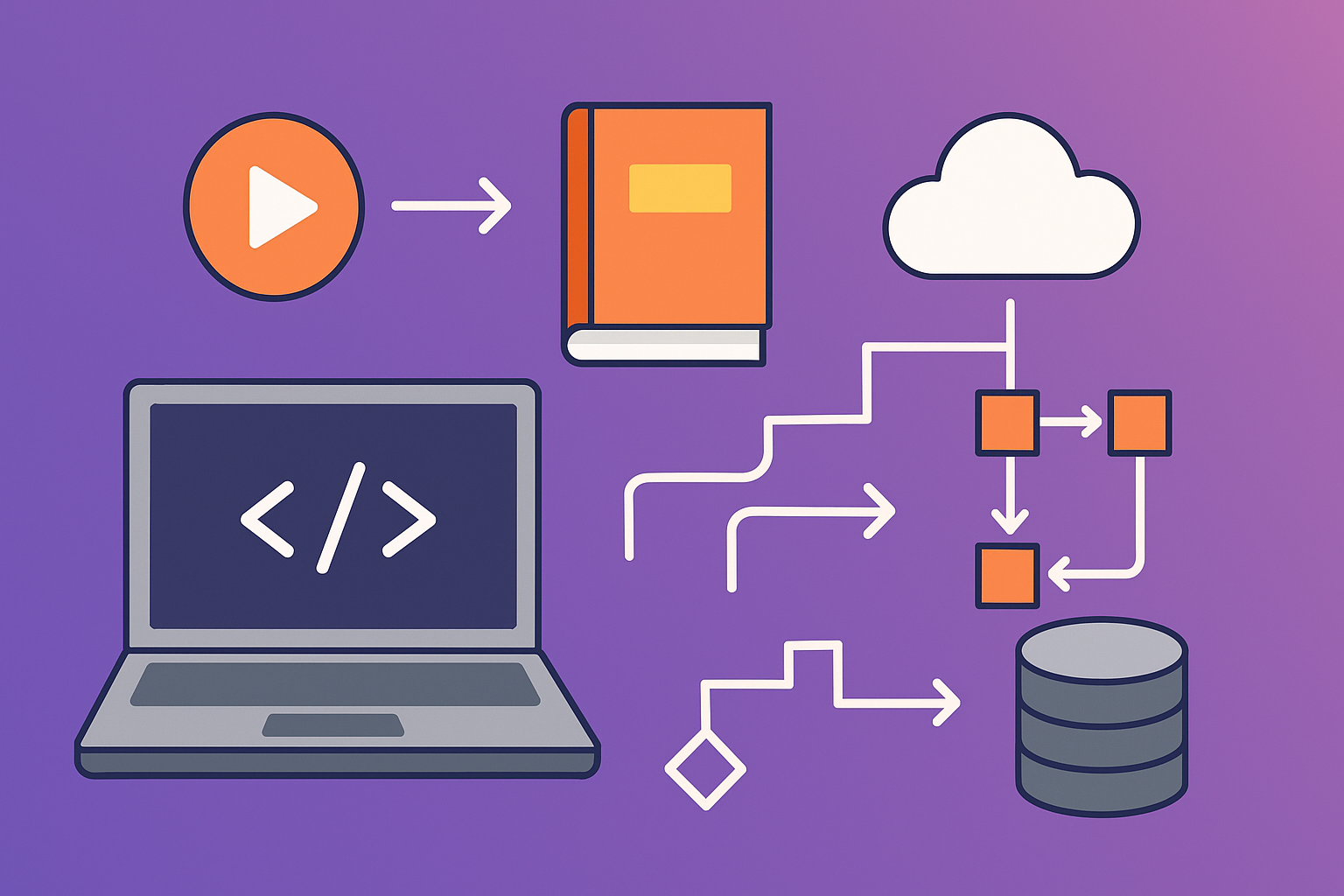Advanced JSON Techniques for Modern Web Development
As web applications become more complex, mastering advanced JSON techniques becomes crucial for building efficient, secure, and maintainable systems. JSON is not just a data format — it’s the backbone of API communication, configuration files, and even modern database storage.
1. Schema Validation
JSON Schema provides a powerful way to validate your data structures before they reach critical parts of your system. This helps catch errors early and ensures data consistency.
Example schema:
{
"$schema": "http://json-schema.org/draft-07/schema#",
"type": "object",
"properties": {
"name": { "type": "string" },
"age": { "type": "number", "minimum": 0 },
"email": { "type": "string", "format": "email" }
},
"required": ["name", "email"]
}
Best Practices:
- Keep schemas versioned in your repo.
- Use automated validation before inserting into a database.
- Integrate schema validation into CI/CD pipelines.
2. Performance Optimization
2.1 Streaming JSON
For large datasets, consider streaming JSON parsing to reduce memory usage.
Node.js example using JSONStream:
const fs = require('fs');
const JSONStream = require('JSONStream');
fs.createReadStream('large.json')
.pipe(JSONStream.parse('*'))
.on('data', data => console.log(data));
2.2 Compression
Use gzip or Brotli compression to reduce JSON payload sizes by up to 70%.
In Express.js:
const compression = require('compression');
app.use(compression());
2.3 Selective Loading
Implement pagination and field selection (GraphQL or query parameters) to load only necessary data.
Example API query:
GET /users?fields=name,email&limit=20&offset=40
3. Advanced Parsing Techniques
3.1 Custom Revivers
Use JSON.parse() with custom reviver functions for data transformation during parsing:
const data = JSON.parse(jsonString, (key, value) => {
if (key === 'date') return new Date(value);
if (key === 'amount') return parseFloat(value);
return value;
});
3.2 Error Handling
Never assume JSON is valid — malformed JSON can crash your app.
try {
const data = JSON.parse(jsonString);
} catch (error) {
console.error('Invalid JSON:', error.message);
// fallback or reject request
}
Pro Tip: Consider using a fault-tolerant parser like lossless-json for edge cases.
4. Security Considerations
- Validate all JSON input against a schema.
- Avoid
eval()or insecure deserialization. - Set size limits for incoming JSON payloads to prevent DoS attacks.
- Use HTTPS to protect JSON data in transit.
- Sanitize JSON before displaying it in the browser to prevent XSS.
5. Tooling & Debugging
- AJV – Fast JSON schema validator.
- JSONLint – Quick syntax validation.
- jq – Command-line JSON processor.
- Insomnia/Postman – API testing with JSON formatting.
Example jq command to filter JSON:
cat data.json | jq '.users[] | {name, email}'
6. Integration Patterns
- REST APIs → Simple, widespread JSON usage.
- GraphQL → Fine-grained JSON field control.
- WebSockets → Real-time JSON data streaming.
- Server-Sent Events (SSE) → Continuous JSON updates.
Conclusion
Mastering these advanced JSON techniques will help you build more robust, efficient, and secure web applications. Whether you are working with large datasets, real-time APIs, or security-critical systems, JSON remains a versatile and powerful tool — when used correctly.
Next Step: Try implementing streaming JSON parsing and schema validation in your current project, then measure the performance improvements.


